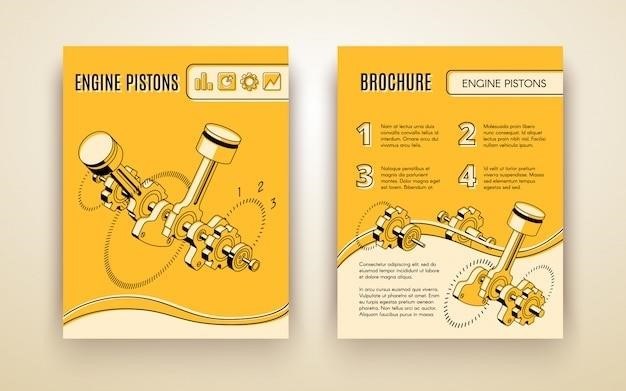Wall Mount Barn Door Guide⁚ A Comprehensive Overview
This guide explores wall-mounted barn door guides, offering a detailed look at their various types, installation methods, and selection criteria. We’ll cover the advantages of wall mounting, including preventing floor damage and enhancing aesthetics. A step-by-step installation process and essential tips are also provided, ensuring a smooth and successful installation.
Types of Wall Mount Barn Door Guides
Wall-mounted barn door guides come in a variety of styles to suit different needs and aesthetic preferences. A common type is the simple roller guide, often made of steel with a powder-coated finish for durability and a sleek look. These guides typically attach directly to the wall near the bottom of the door opening, providing stability and preventing the door from swinging. Some models offer adjustability, allowing for fine-tuning to ensure smooth operation. For a more discreet look, flush-mount guides sit closer to the wall, minimizing visual impact. Materials vary, with options including metal (steel, aluminum) and sometimes even plastic for lighter doors. The choice depends on the weight of the door, the style of your decor, and the material of your wall. Consider the finish, too—black is popular but other colors are available to match your hardware. Always check the weight capacity before purchasing to ensure compatibility with your door.
Installation Methods for Wall Mount Guides
Installing a wall mount barn door guide typically involves several key steps. First, precise measurements are crucial to determine the guide’s placement for optimal door operation. This usually means measuring from the floor to the bottom of the door and then transferring that measurement to the wall. Next, you’ll need to locate wall studs for secure mounting. Using a stud finder ensures the guide is firmly attached and capable of supporting the door’s weight. Pre-drilling pilot holes is recommended before screwing the guide into place to prevent damage to the wall and ensure a clean installation. Some guides may require additional brackets or supports for extra stability, depending on the door’s weight and the type of wall material. Always follow the manufacturer’s instructions closely for specific guidance. After mounting, test the door’s movement to ensure smooth operation and adjust the guide as needed for optimal performance. Finally, check for any gaps or misalignments and tighten screws as necessary for a secure and stable installation.
Choosing the Right Guide for Your Door
Selecting the appropriate wall mount guide hinges on several key factors. Firstly, consider the weight of your barn door; heavier doors necessitate sturdier guides capable of withstanding the increased load. The material of the guide is also crucial; steel guides are generally more robust than those made of lighter materials like plastic or aluminum. Next, assess your wall type; guides designed for drywall installation might not be suitable for brick or concrete walls. The aesthetic appeal of the guide is another factor; choose a finish that complements your door and interior décor. Furthermore, the installation method should align with your skills and comfort level; some guides offer easier installation than others. Think about the adjustability of the guide; adjustable guides provide more flexibility in aligning the door precisely. Finally, check for features like felt strips or bumpers that minimize noise and prevent the door from scratching the wall. Carefully weighing these elements will ensure that you select a wall mount guide that perfectly matches your needs and provides years of reliable service.

Benefits of Wall-Mounted Barn Door Guides
Wall-mounted guides offer several advantages⁚ they prevent floor damage, ensure smooth door operation, and provide a sleek, modern aesthetic. They are ideal for various floor types and enhance the overall look of your barn door system.
Preventing Door Swinging and Maintaining Stability
A significant advantage of wall-mounted barn door guides is their effectiveness in preventing the door from swinging or swaying during operation. Unlike floor-mounted guides, which can sometimes allow for slight movement, a properly installed wall-mounted guide provides a secure and stable point of contact, keeping the door firmly in place. This is crucial for maintaining the structural integrity of the door and preventing damage to the door itself or surrounding structures. The stability offered by wall-mounted guides ensures a smooth, quiet sliding motion, free from the jarring or wobbling that can occur with less secure systems. This stability is especially important for heavier doors, where the added support of a wall-mounted guide helps to prevent excessive stress on the track and hardware. The result is a more reliable and longer-lasting barn door system. The added stability prevents the door from becoming misaligned over time, avoiding the need for frequent adjustments or repairs. By firmly securing the bottom of the door, the wall-mounted guide works in conjunction with the top track to create a robust and balanced system, promoting a consistent and smooth sliding action for years to come.
Avoiding Floor Damage
One of the primary benefits of choosing a wall-mounted barn door guide is the elimination of the need to drill into or otherwise modify your floor. Floor-mounted guides, while functional, often require screws or anchors that can damage hardwood floors, tile, or even carpeting. The potential for cracks, scratches, or other imperfections makes floor-mounted guides less appealing for homeowners concerned about maintaining the integrity of their flooring. A wall-mounted system bypasses this issue entirely. Installation typically involves attaching the guide to the wall or baseboard, leaving your floor untouched and undamaged. This is particularly advantageous in rented properties or homes with delicate or valuable flooring. The absence of floor-mounted hardware also simplifies cleaning and maintenance, as there are no protruding parts to catch dust, debris, or vacuum cleaner attachments. The clean lines and unobstructed floor space contribute to a more aesthetically pleasing and functional room design. For those with concerns about preserving their floor’s appearance and structural integrity, a wall-mounted barn door guide offers a superior, damage-free solution.
Aesthetic Considerations
Beyond functionality, the aesthetic appeal of a wall-mounted barn door guide significantly impacts the overall look of a room. Unlike floor-mounted guides that can disrupt the clean lines of a floor, wall-mounted options maintain a sleek and uncluttered appearance. The absence of a visible track on the floor allows for a more seamless integration with the existing décor. Many wall-mounted guides are designed with a minimalist aesthetic, often featuring a slim profile and a matte black finish that blends seamlessly into various interior design styles. The choice of finish can be customized to match existing hardware or create a striking contrast, enhancing the overall visual appeal. Furthermore, the ability to position the guide discreetly along the baseboard or wall further minimizes visual impact, allowing the barn door itself to become the focal point. This clean, uncluttered look is particularly beneficial in modern or minimalist spaces, where simplicity and elegance are paramount. The discreet nature of the wall-mounted system allows for a greater sense of spaciousness and open design, enhancing the visual appeal of the room as a whole.

Installation Guide and Tips
This section details the tools, materials, and step-by-step instructions for installing a wall-mounted barn door guide. We’ll provide helpful tips for a smooth installation and trouble-shooting common issues.
Tools and Materials Needed
Before embarking on your wall-mounted barn door guide installation, gather the necessary tools and materials. This typically includes a drill with appropriate drill bits (for pilot holes and securing screws), a measuring tape for precise placement, a level to ensure the guide is perfectly aligned, and a pencil for marking locations. Screws suitable for your wall type (consider drywall anchors for hollow walls) are essential. You’ll also need a screwdriver (either Phillips or flathead, depending on your screws). Depending on your chosen guide, additional tools such as a stud finder (to locate wall studs for more secure mounting) might be beneficial. Finally, always have a safety pair of glasses to protect your eyes from debris. Remember to check the specific requirements listed in your barn door hardware kit’s instructions, as these may vary based on the chosen product. Having all materials readily available simplifies the installation process.
Step-by-Step Installation Process
Begin by carefully measuring and marking the desired location for your wall-mounted barn door guide. Ensure the placement allows for smooth door operation and aligns with the door’s bottom edge. Use a level to verify the marked position is perfectly horizontal. If using a stud finder, locate wall studs for optimal stability. Pre-drill pilot holes to prevent wood splitting, especially if working with hardwood. Attach the guide to the wall using the provided screws, ensuring they are securely fastened. Take your time to ensure that the guide is firmly attached and perfectly level. Once the guide is secured, test the door’s movement to confirm smooth operation. If needed, make minor adjustments to ensure the door glides effortlessly along its track, and remains stable. Consult your specific product’s instruction manual for any specific details or variations in the process. Finally, admire your handiwork and enjoy the improved functionality and aesthetics of your barn door.



























